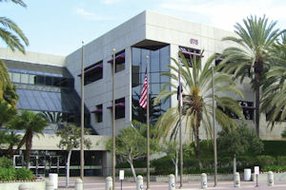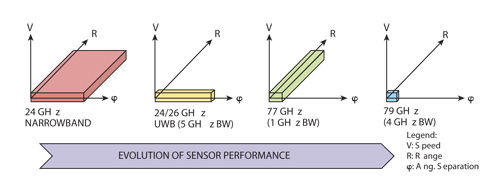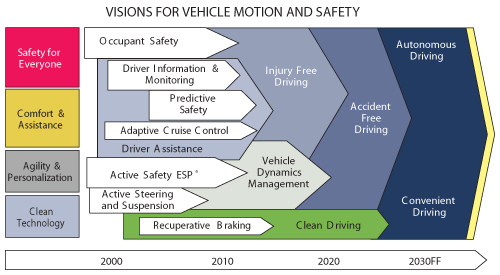When I got out of the Navy in 1974, I had two employment offers, ATT Bell Labs in Holmdel, NJ and Hughes Aircraft in Fullerton, CA. I went with Hughes. Now I'm really feeling old seeing the places where I spent decades of my life (74-94) working being sold off.
Books have been written about the
Hughes Aircraft Company and the technical wonders developed there. See books by
Pat Hyland,
Ken Richardson and
Scott Walker. During the golden
age of the aerospace industry in Southern California from 1953 to 2000, many technological marvels were developed.
Throughout that era, the Los Angeles basin was a fertile
incubator of scientific breakthroughs, constantly advancing the art of
defense technology. Hughes Aircraft Company grew from a minor-league
airplane builder at the beck and call of legendary aviator/film
maker/industrialist Howard Hughes to become the world's leader in the world of defense electronics, missiles and radar. How did this
happen?
After Mr. Hughes' departure from active management at the insistence of the Air Force, he set up the Howard Hughes Medical Institute (HHMI) as owner shielding it from public ownership and scrutiny, which allowed a talented
group of scientists and engineers to control the company and run
with it. The goad of competition was key, be it internal to the company
("You think that invention is cool, just get a load of this!"), external
with other aerospace firms ("Whatever your missile can do, ours does
faster and farther."), and international against the cold warriors of
the USSR (simple but reliable Russian technology versus superior but
temperamental American gear). Richardson and his crew pushed back the
frontiers of technology rapidly, in competition with all these players. This era started ending when Hughes died in 1974 without a validated will, and company was eventually sold off to GM in 1985, then dismembered among Raytheon, Boeing, and NewsCorp.
Today,
the national aerospace industry is dominated by mega-companies
whose expertise seems to lie in lobbying politicians instead of actually
delivering hardware on-time and on-budget. In comparison, how did the
Hughes Aircraft function and why was it so successful? Hughes at its best developed a unique way to manage and lead talented people. There are anecdotes
aplenty of the technologists that made Hughes Aircraft tick and why they
did what they did. We seemed to have such fun doing it.We were dedicated to our national defense as well as to the
disciplines of science and engineering.
When companies like Hughes, AT&T (and Apple, for that matter) are at their
strongest, it’s easy for community boards and locals to be swept up in
the optimism of a brand-new, high-profile corporate campus. But things
change. Management priorities and Technology evolve. Even the Navy, when costs and threats change (and BRAC intervenes) will abandon whole complexes such as those in the
San Francisco, CA and
Vallejo, CA. And decades later, buildings are shuttered. Then communities must adapt.
Hughes Fullerton GSG
 |
| Bldg 600-604 campus, 607 under construction |
sold to GM then sold to Raytheon then sold to real estate developer.
 |
| Bldg 675 |
25-Acre Raytheon Campus in Fullerton Sold | Orange County Business Journal
Hughes Aircraft Corporate HQ built and sold off to LMU
built at the Hughes peak, then sold off to LMU
Hughes Moving to New Headquarters : Recessed Design Preserves Views of Westchester Neighbors - Los Angeles Times
LMU to Take Over Hughes Headquarters - Los Angeles Times
ATT Bell Labs Holmdel
-sold to Lucent then sold to Alcatel -then Abandoned
The Birthplace of the Cellphone Is Being Turned Into a Mall






